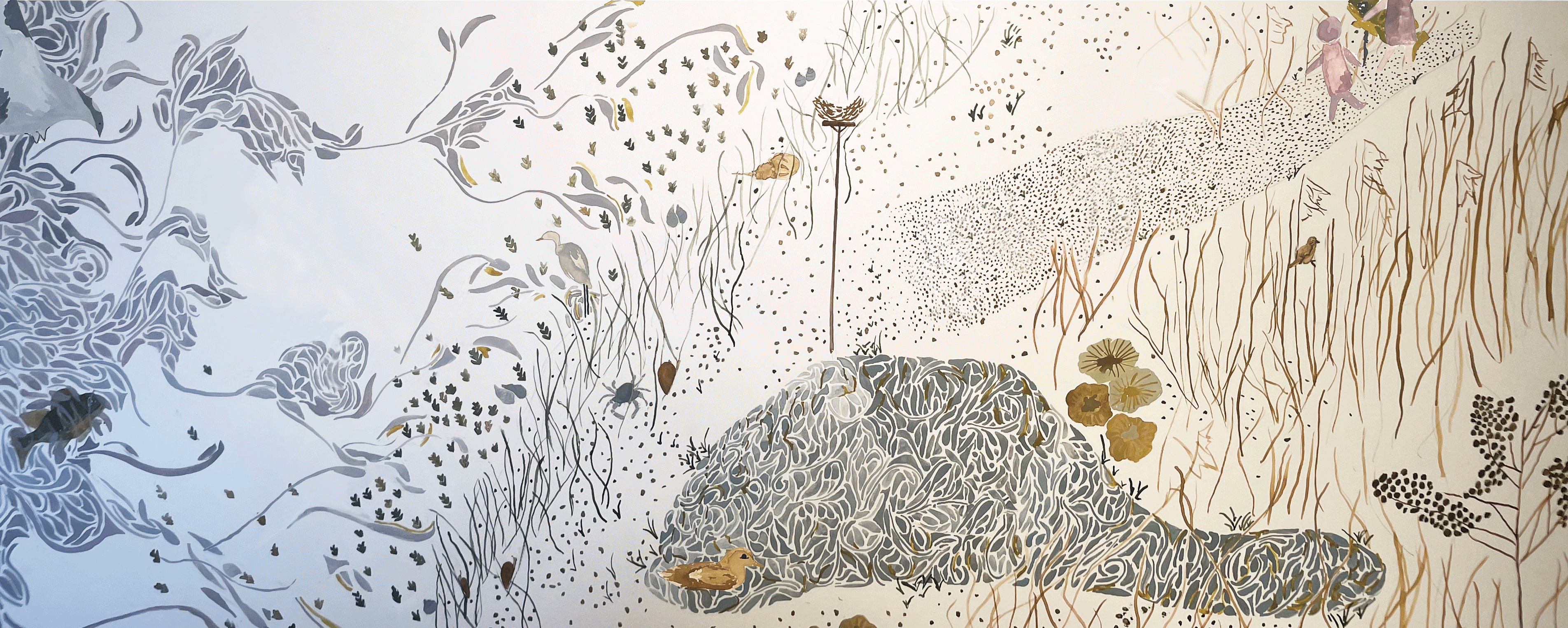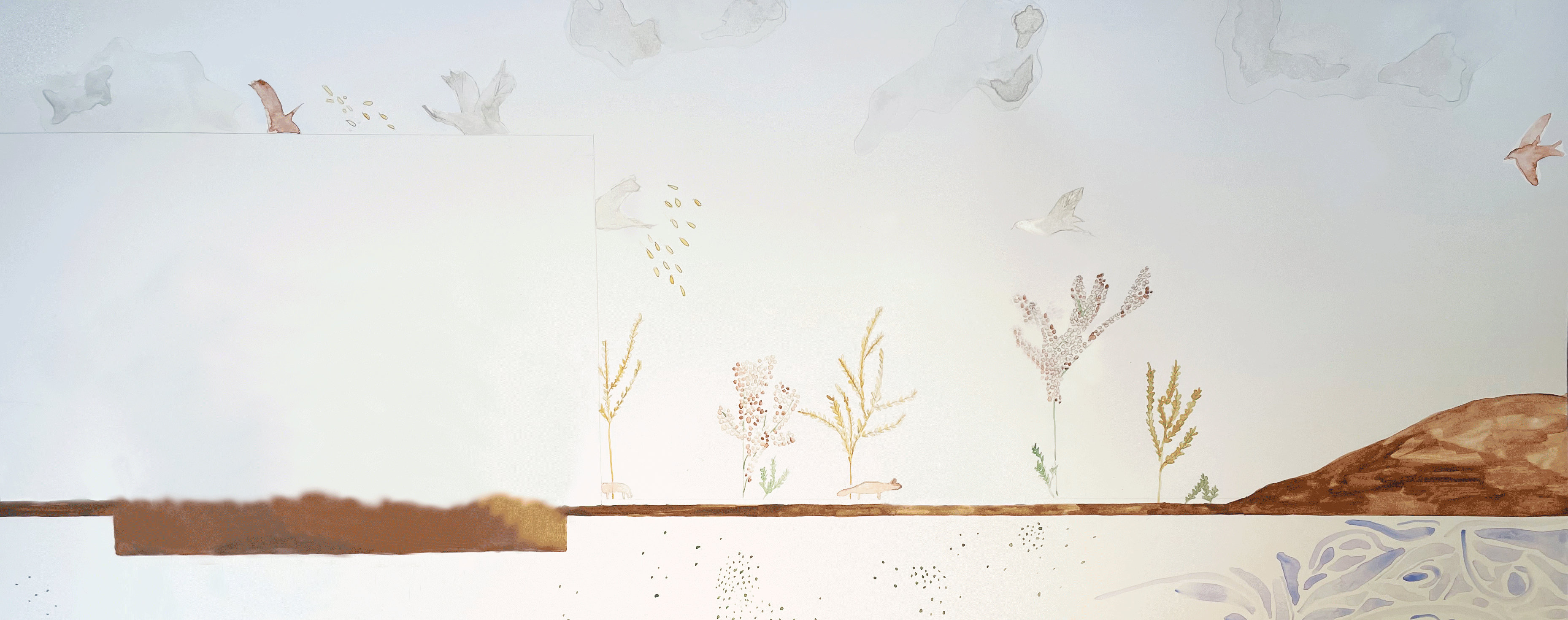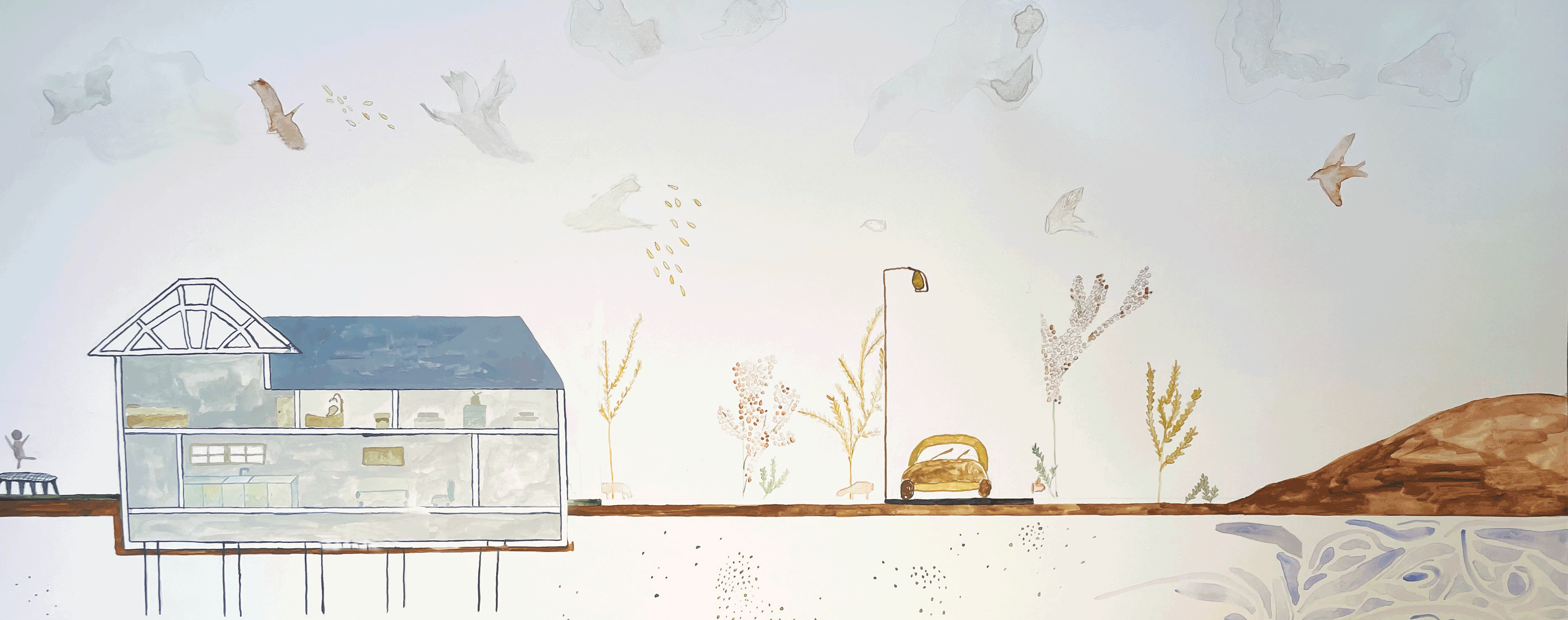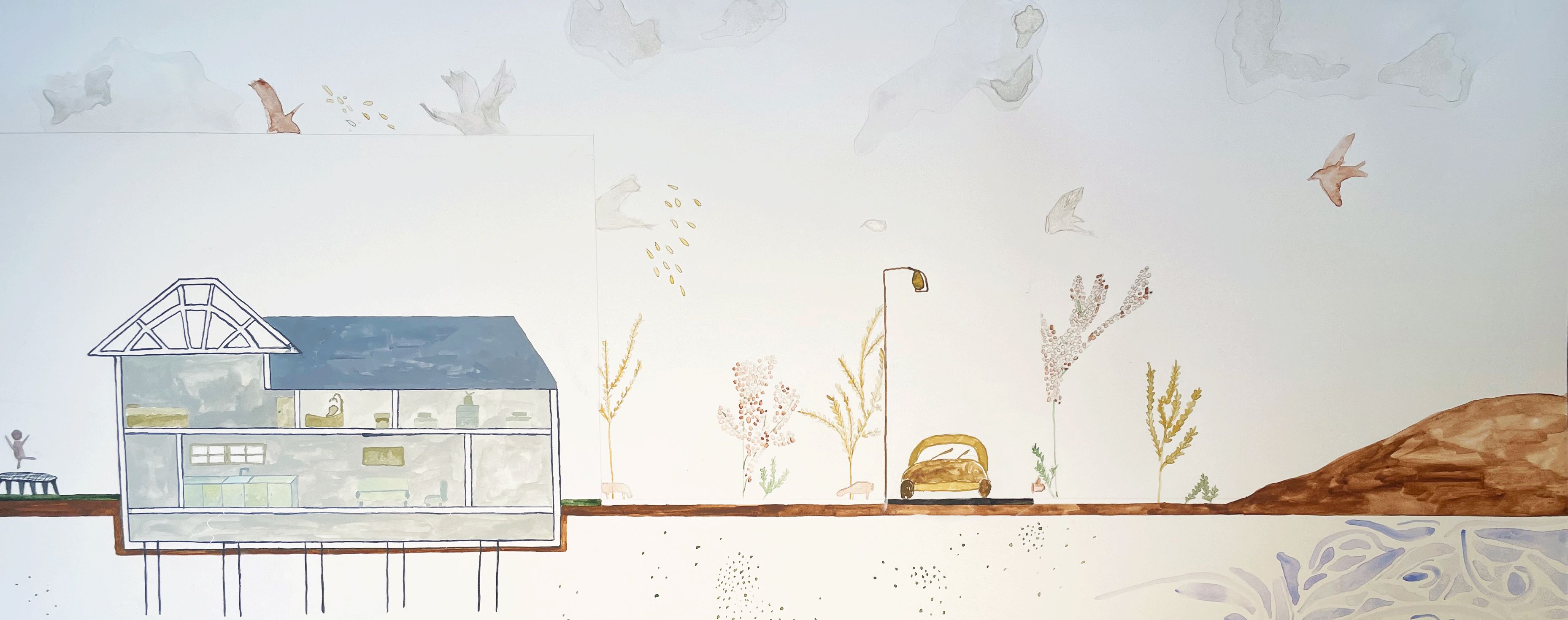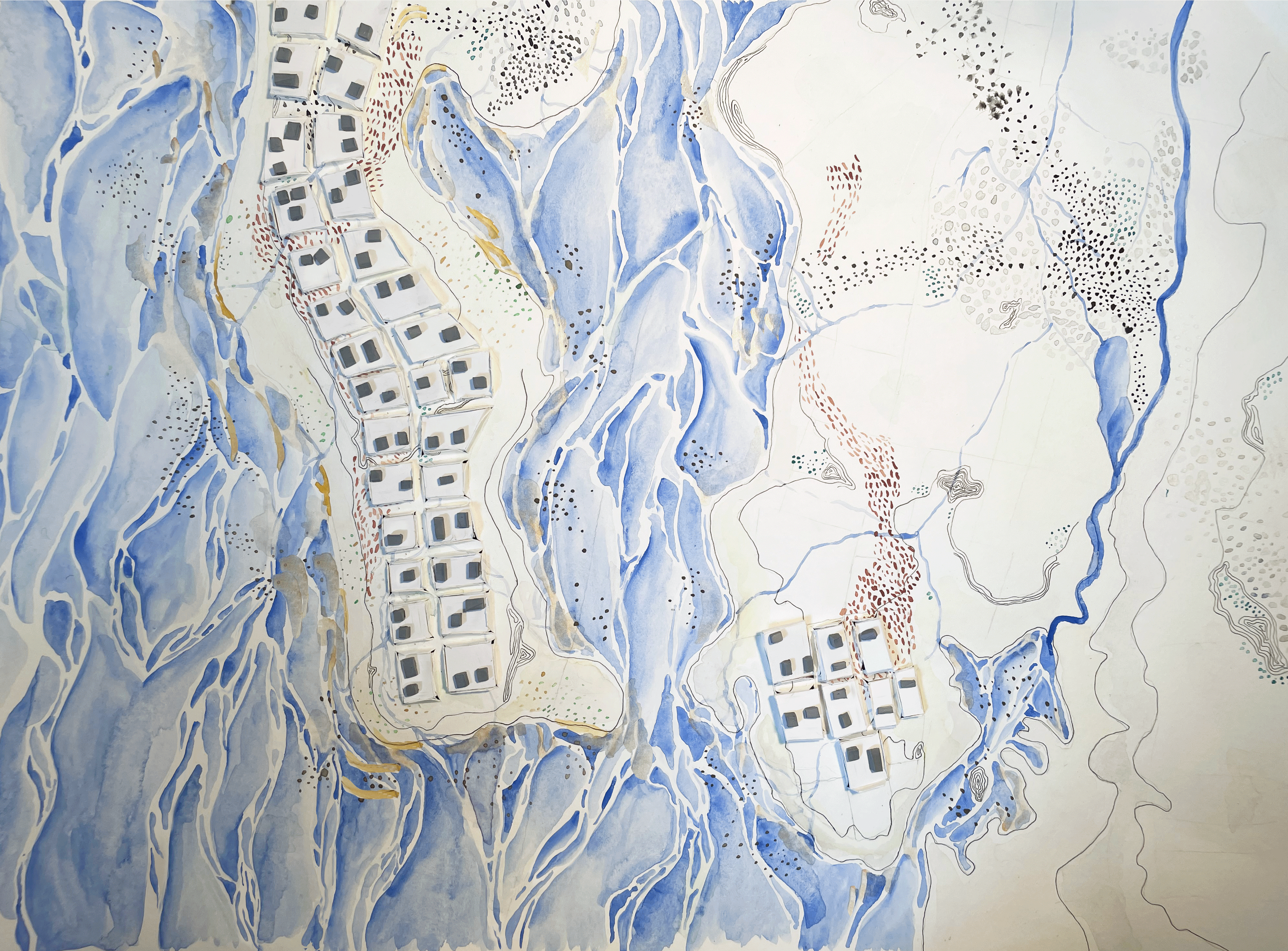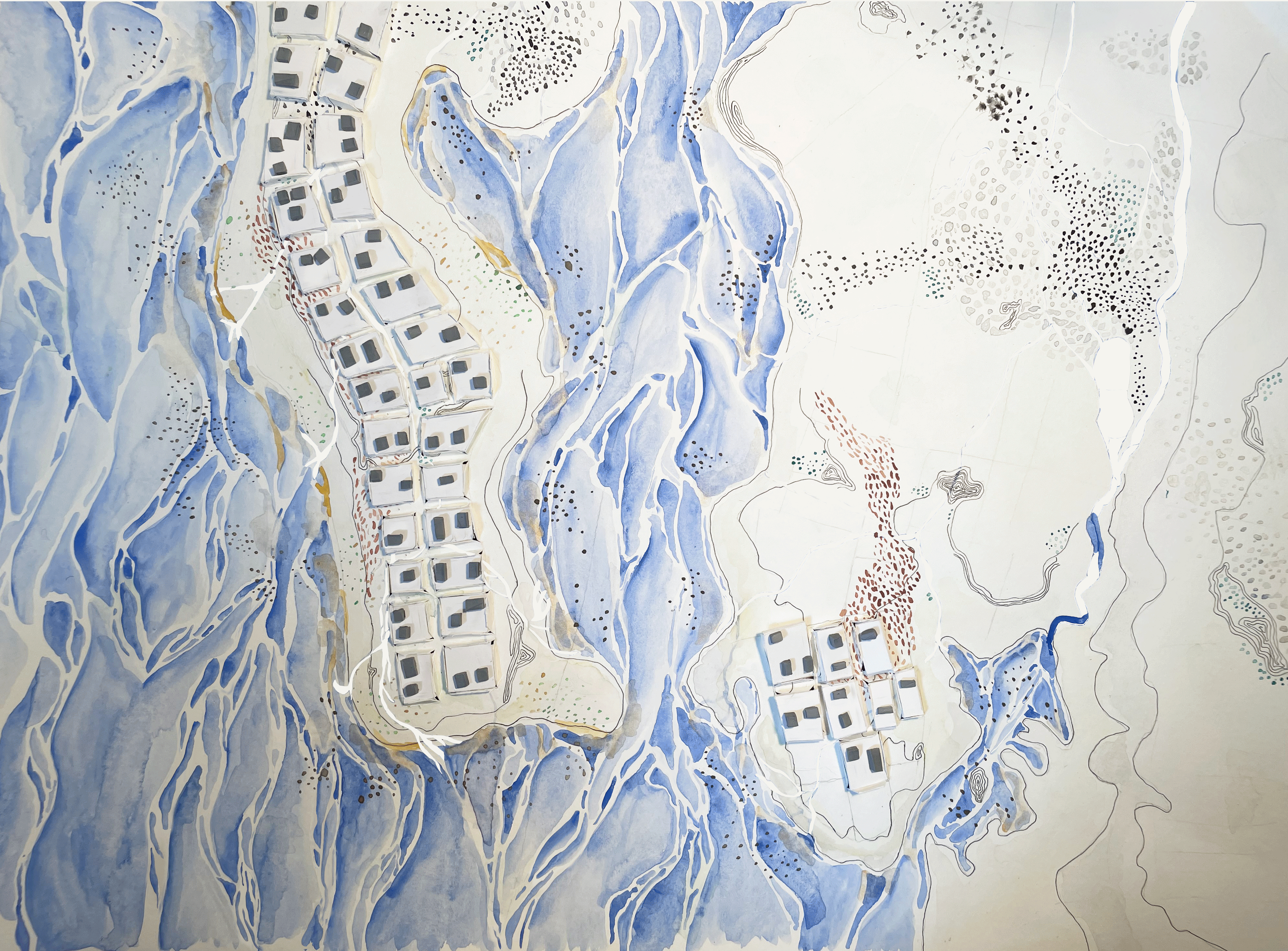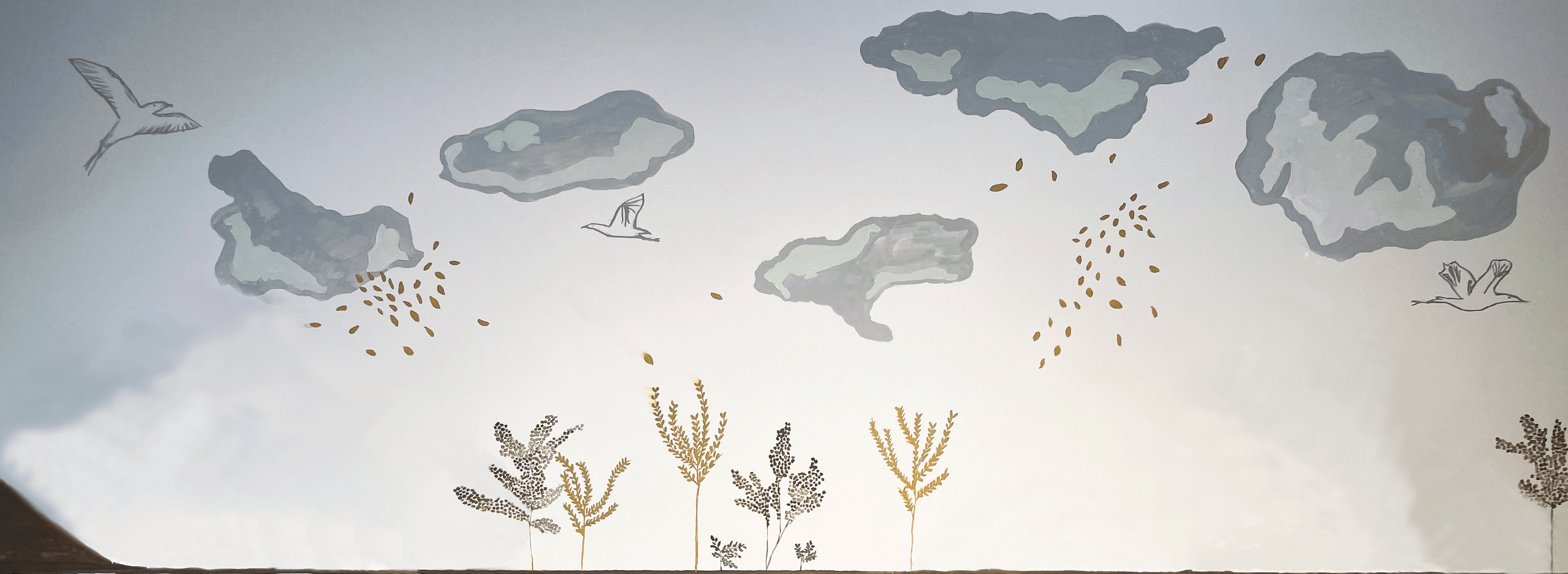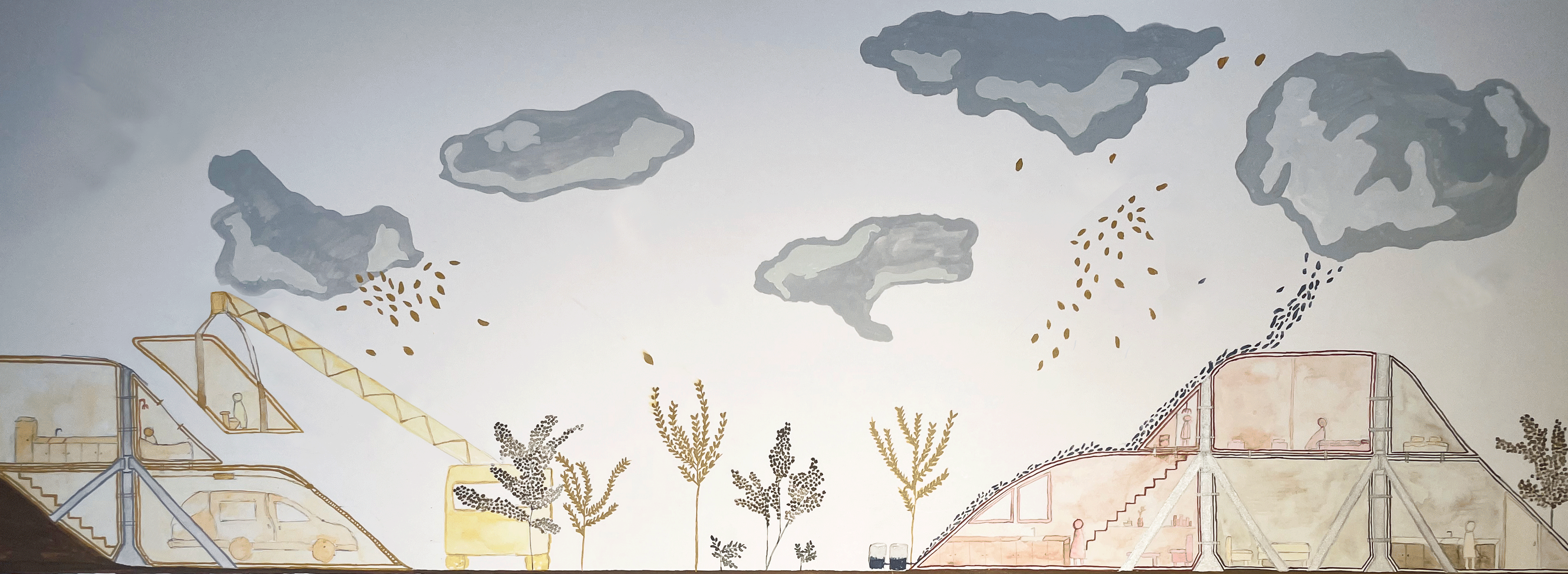Image
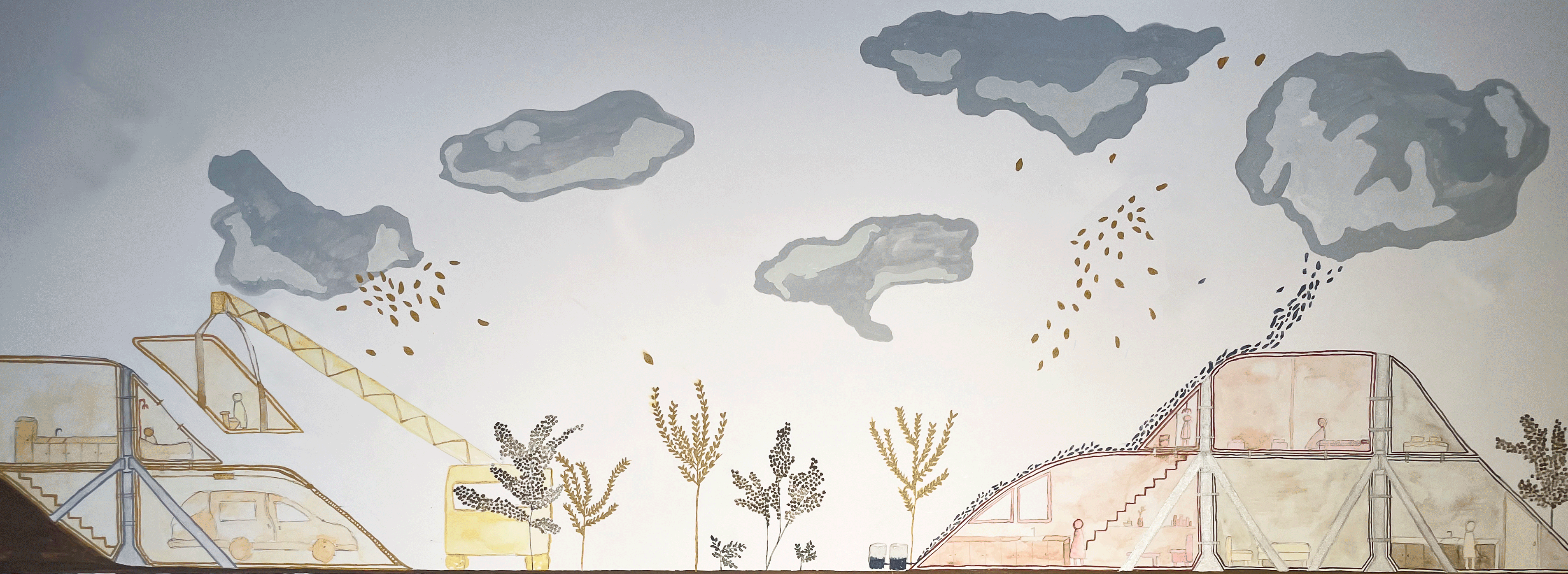
Christina Truwit
ABSTRACT
The built environment is built for resilience. It is curated to have prominence over natural systems, formulated to withstand, and rebuilt to withstand, once ruined. The power of the biosphere is subverted, however, building to protect against nature undermines opportunities within natural systems to protect us.
My thesis is focusing on the problems at play with property and our pressing climate issues. I will be looking at what opportunities exist to deprioritize owned property, to allow for a dispersal of stewardship, and acknowledgment of natural systems.
Land movement
An instability of land suggests a necessity for flexibility in the built environment and policies surrounding it. Evolving shorelines, land migration patterns, and waterflow, opens doors for alternative methods of relating to the built environment, and its “sites.”
Image
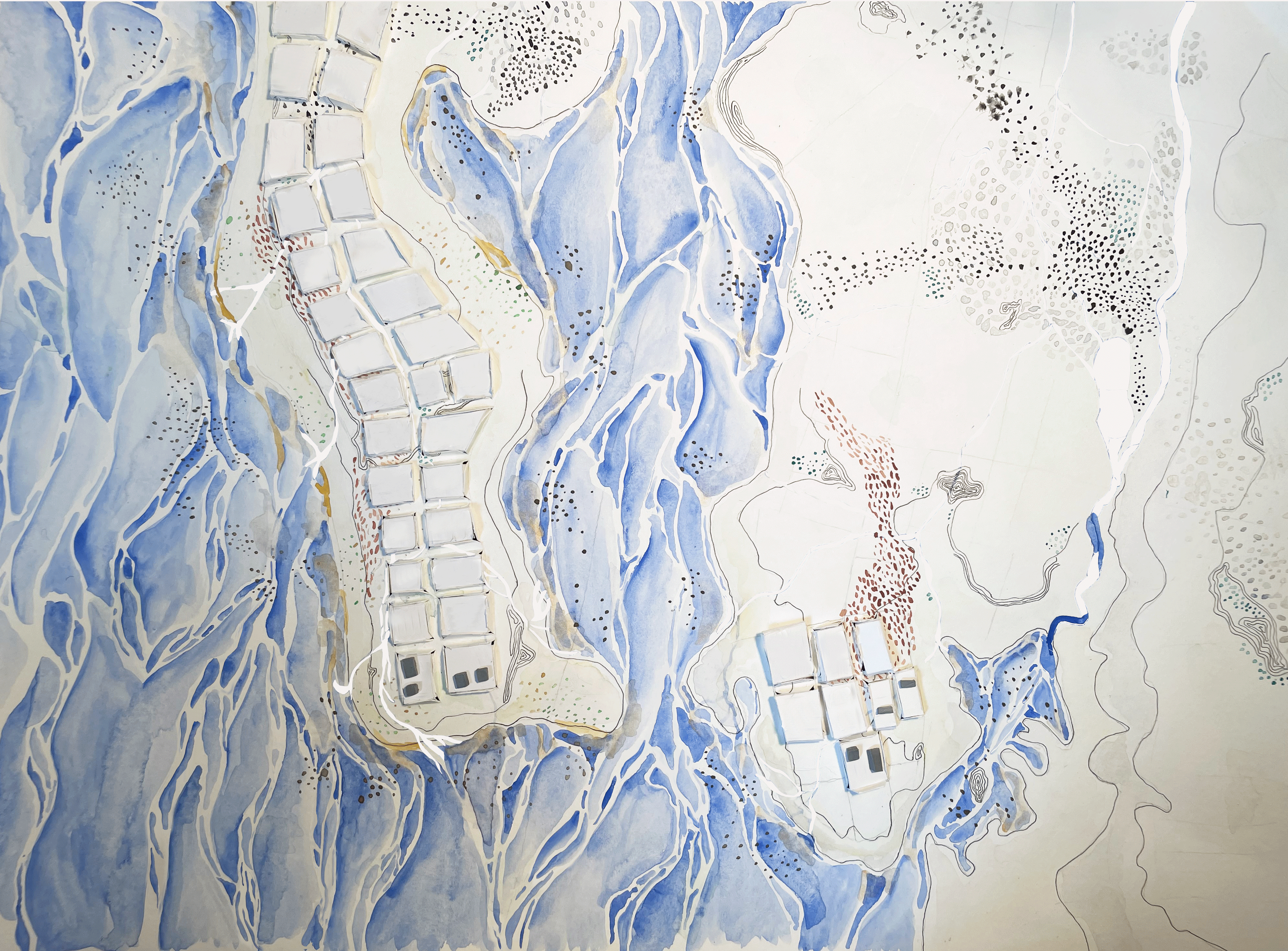
Static Homes
We currently alter groundcover and air quality, through invisible property lines acting as a barrier. Organized to release any responsibilities from an individual outside of what is owned. These lines of ownership, bulldoze directly through plant and animal paths and movement, ignoring natural systems to protect our homes. With soil types changing, more erosion and flooding, the system of property creates more risk for individual homes.
Individual stewardship is encouraged in areas that were naturally structured to symbiotically interact with larger systems.
Removing Property
In the Narragansett Bay Estuary, sea level rises are expected to be between 3-5 feet by 2100.
How would this coastal land react to climate change, if we removed the opportunity to own land property, and an individual or communal ownership revolved exclusively around features of the built?
Nestle Spots
I am proposing a switch in prominence between natural systems and the built environment. This would include restructuring the placement of the built.
Once homes are bought and removed, natural systems such as waterflow, migration paths, plant movement, are mapped out and new organization of where to build could be strictly based off spaces between these systems. Size of the built structures can be determined by the size of the nestle spots.
Image

Modular Pods
Not owning the land underneath, enforces building methods that aren’t tied to a particular spot and opens doors for structures that can be moved or altered when growth patterns change and, or when disaster strikes.
I looked at existing structural methods that could be employed. Arrangement of topography utilizes stacking to create strength, curvature and slope interact with wind loads to snake along curves, and redirect, rather than to deflect against. Structural cores act simultaneously as both structure and mechanical, bringing what is needed to modular pods of the home. Together these elements create ease for rearranging.
Marshland
With new policy structuring where a home can be placed, residents are forced to learn, respect, and care for the surrounding environment to continue to place their built structure in its current position. Homes that are degrading or interfering with natural systems must be moved.
Image
